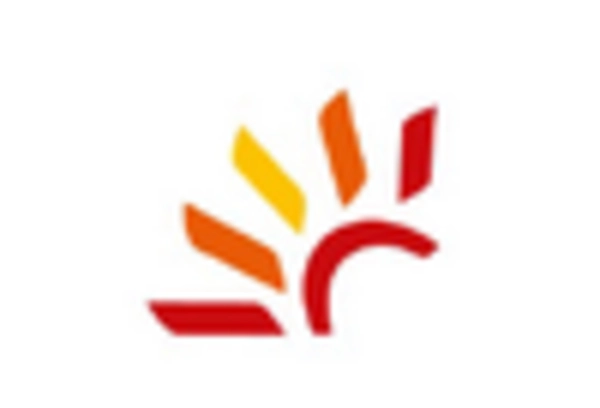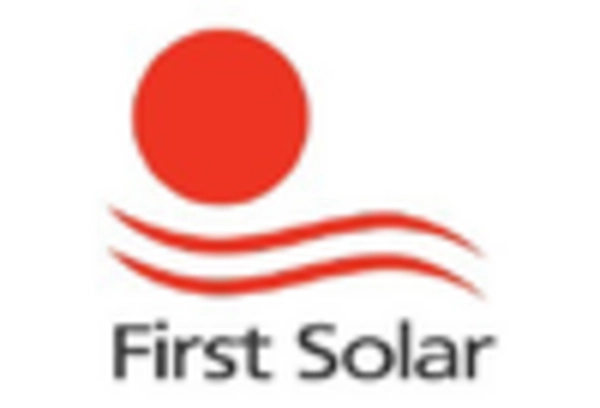The Solar PV Module Market is currently characterized by a dynamic competitive landscape, driven by increasing global demand for renewable energy solutions and technological advancements. Key players such as LONGi Green Energy Technology Co. Ltd (CN), Trina Solar Limited (CN), and First Solar, Inc. (US) are strategically positioning themselves through innovation and regional expansion. LONGi Green Energy, for instance, focuses on high-efficiency monocrystalline solar cells, which enhances its competitive edge in performance. Meanwhile, Trina Solar has been actively pursuing partnerships to bolster its supply chain resilience, indicating a shift towards collaborative strategies in the market. Collectively, these strategies contribute to a moderately fragmented market structure, where innovation and operational efficiency are paramount for maintaining competitive advantage.
In terms of business tactics, companies are increasingly localizing manufacturing to mitigate supply chain disruptions and optimize logistics. This approach not only reduces costs but also aligns with regional sustainability goals. The market structure remains moderately fragmented, with several players vying for market share. The collective influence of these key players shapes a competitive environment where agility and responsiveness to market demands are critical.
In September 2025, JA Solar Technology Co. Ltd (CN) announced the opening of a new manufacturing facility in Southeast Asia, aimed at increasing its production capacity and reducing lead times for regional customers. This strategic move is significant as it not only enhances JA Solar's operational efficiency but also positions the company to better serve the growing demand in emerging markets. The facility is expected to leverage local resources, thereby optimizing supply chain logistics and reducing costs.
In August 2025, Hanwha Q CELLS (KR) launched a new line of bifacial solar modules designed to maximize energy generation in diverse environmental conditions. This innovation reflects the company's commitment to technological advancement and sustainability. By introducing these high-performance modules, Hanwha Q CELLS aims to capture a larger market share, particularly in regions with varying climatic conditions, thus enhancing its competitive positioning.
In July 2025, First Solar, Inc. (US) entered into a strategic partnership with a leading energy storage company to integrate solar and storage solutions. This collaboration is indicative of a broader trend towards hybrid energy systems, which are becoming increasingly relevant in the context of energy transition. By combining solar generation with storage capabilities, First Solar is likely to enhance its value proposition, catering to the evolving needs of customers seeking reliable and sustainable energy solutions.
As of October 2025, the competitive trends in the Solar PV Module Market are increasingly defined by digitalization, sustainability, and the integration of artificial intelligence in manufacturing processes. Strategic alliances are playing a crucial role in shaping the landscape, enabling companies to leverage complementary strengths and enhance their market offerings. Looking ahead, competitive differentiation is expected to evolve from traditional price-based competition towards a focus on innovation, technological advancements, and supply chain reliability, underscoring the importance of agility in a rapidly changing market.

















Leave a Comment